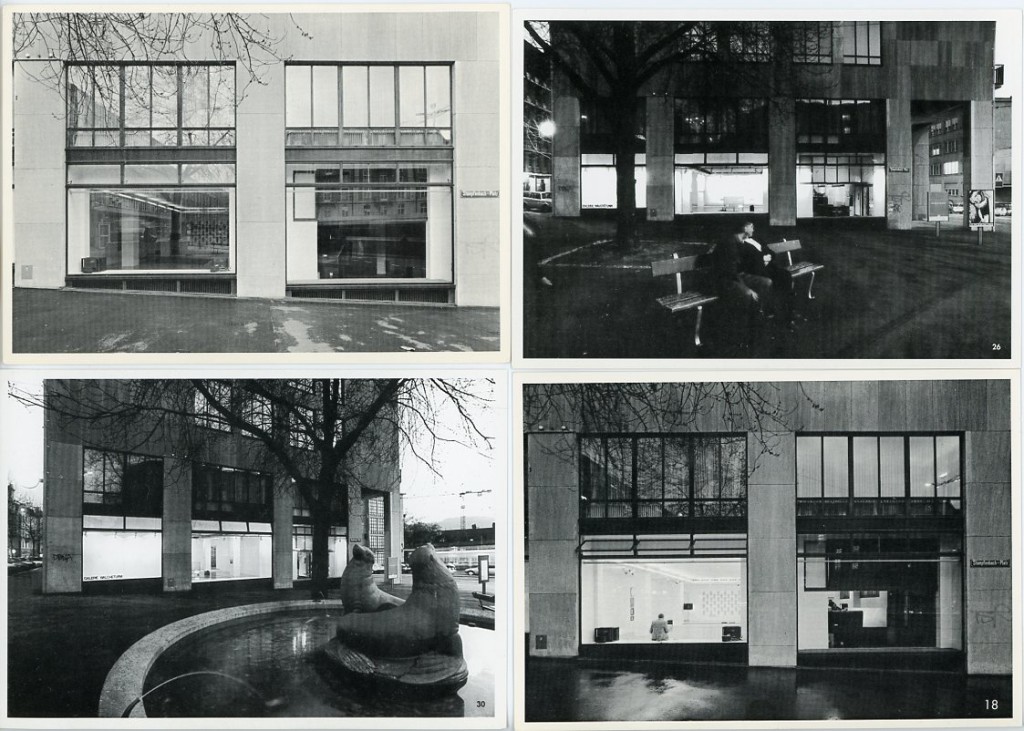
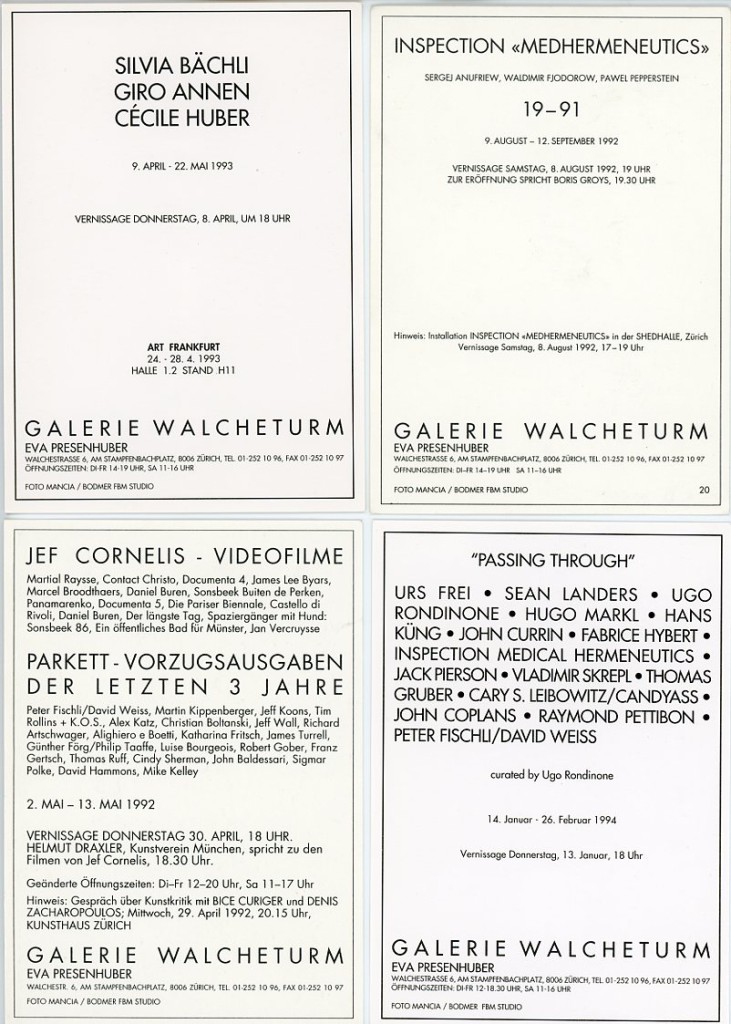
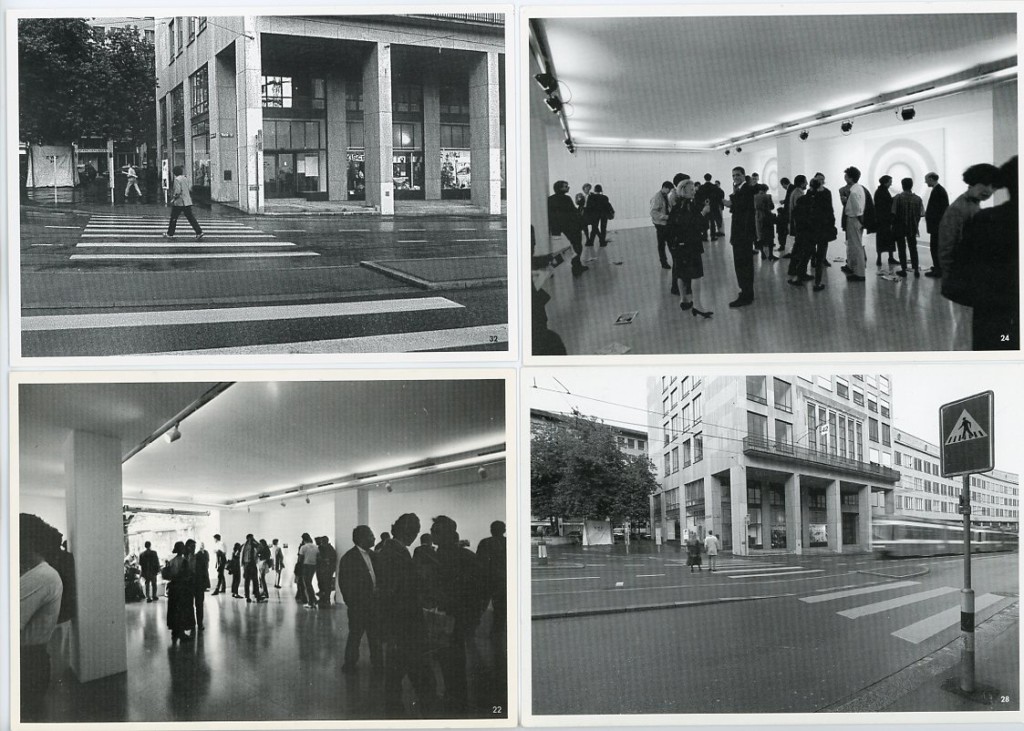

In the early 90s the invitation cards of Zurichs legendary Galerie Walcheturm (run by Eva Presenhuber) showed the gallery space and its visitors instead of artworks or exhibitions. These invitations cards were intriguing and made us happy. It felt like a different way of doing things and it was. All pictures were taken by Franziska & Bruno Mancia (FBM Studio, see their book documenting their practice here)
Raymond Pettitbon
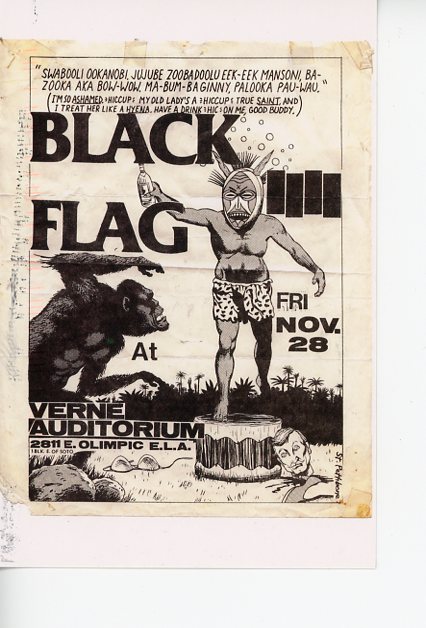
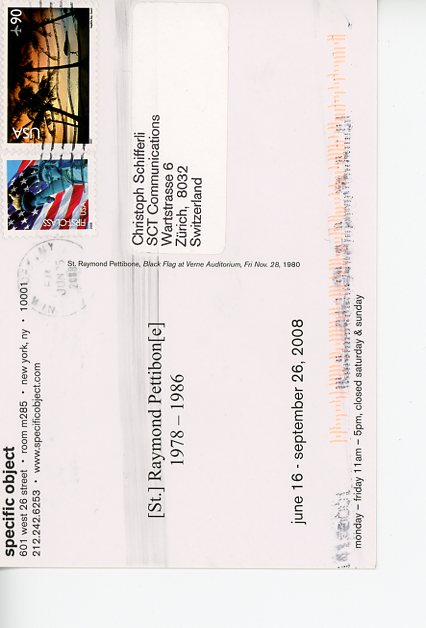
Raymond Pettibon’s exhibition at Specific Objects in 2008. Here is the checklist, a pdf.
Roberta Smith in The New York Times: ” With their sharp shadows, pulpy imagery, explicit sex and random violence, Raymond Pettibon’s drawings have been likened to film noir, which preceded them, and Southern California punk rock, which developed parallel to them. Focusing on the latter symbiosis, this exhibition examines Mr. Pettibon’s circuitous path toward art.
His public exposure began in 1978, when his brother, Greg Ginn, the guitarist for the punk band Black Flag, published Mr. Pettibon’s first zines while using images from them for Black Flag fliers, album covers and gift items (T-shirts, stickers and skateboards). All were published by SST Records, founded when Mr. Ginn was 12 as a mail-order company for World War II surplus radio parts and converted into a record label when no one else would work with Black Flag. SST Records became central to the development of American indie rock, releasing albums by groups like the Minutemen, Hüsker Dü, the Meat Puppets and Sonic Youth.”
Contemporary Fine Arts, Berlin
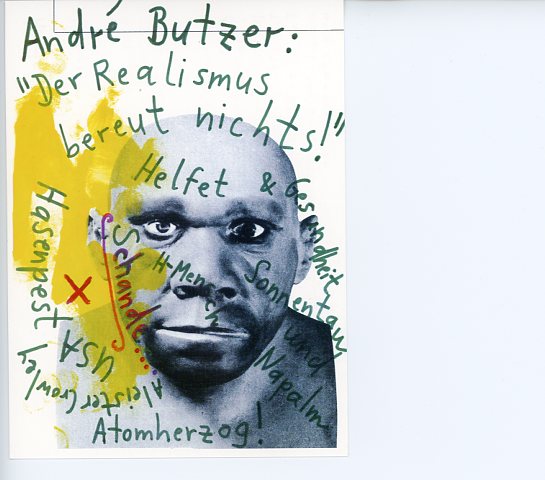
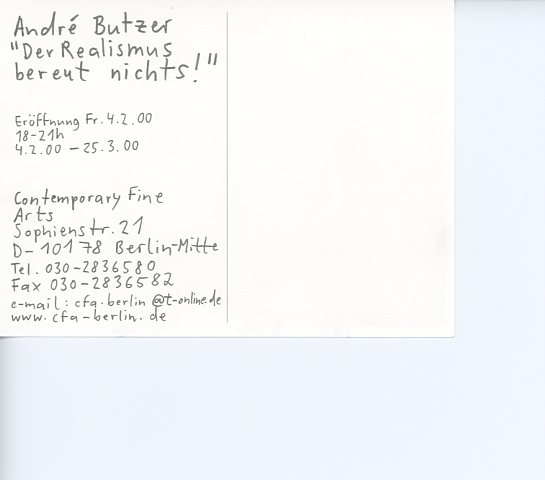

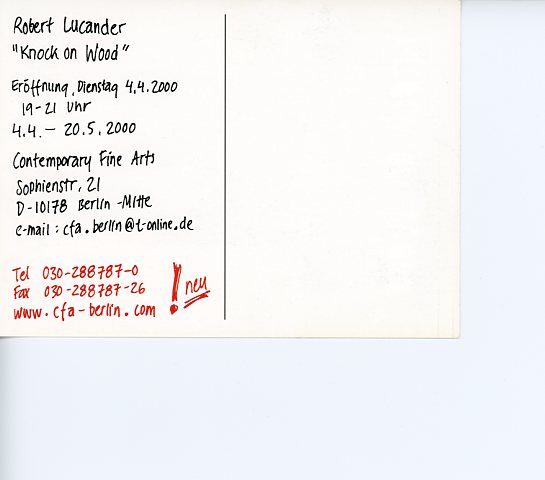
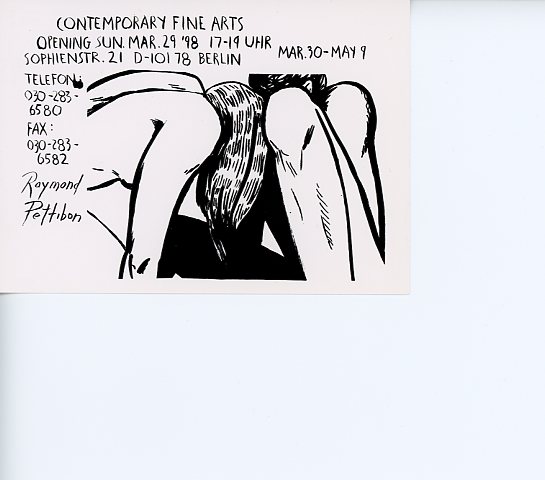
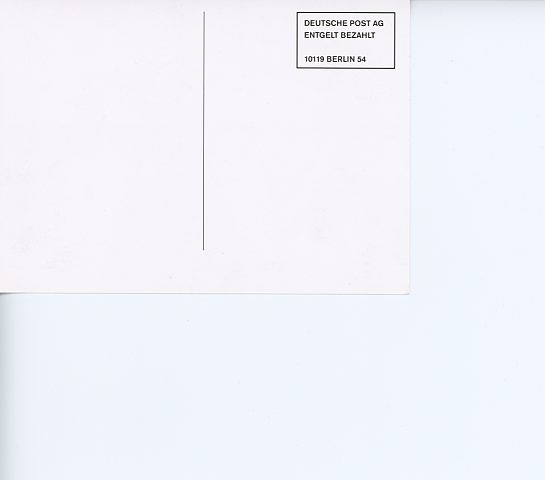
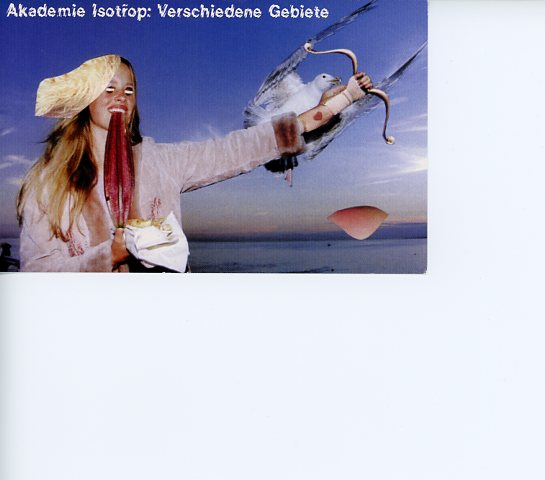
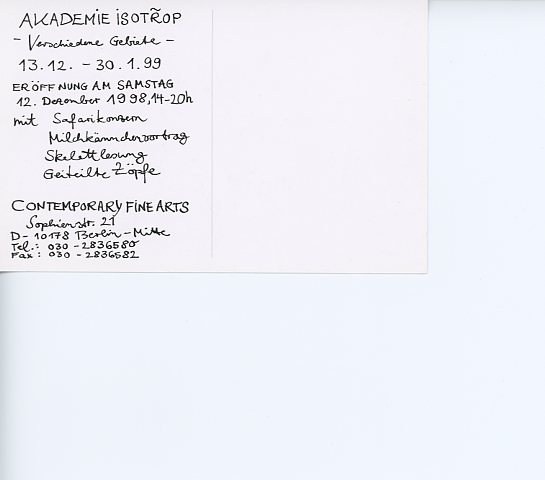
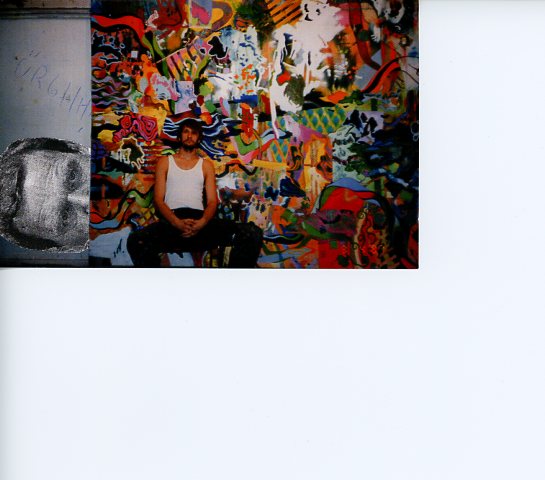
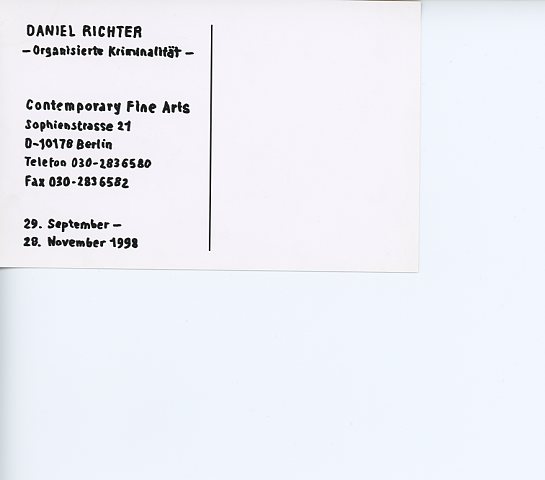
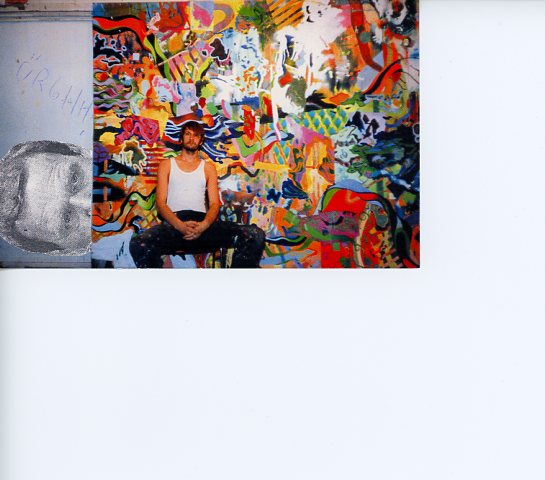
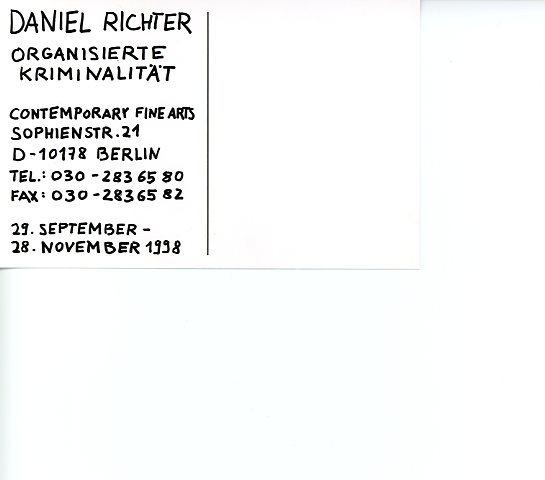
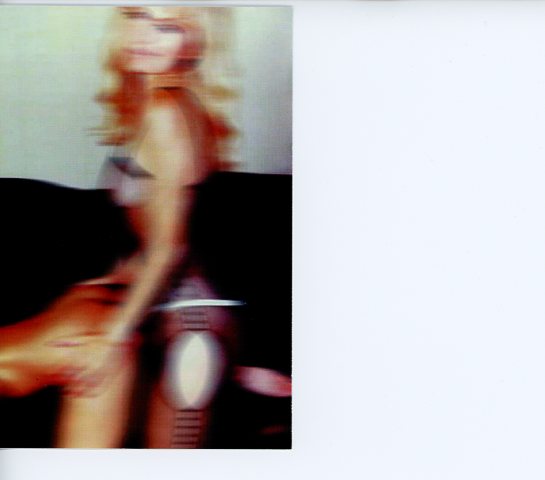
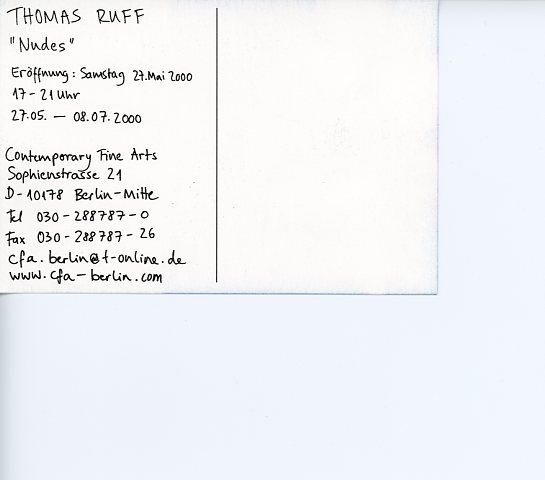
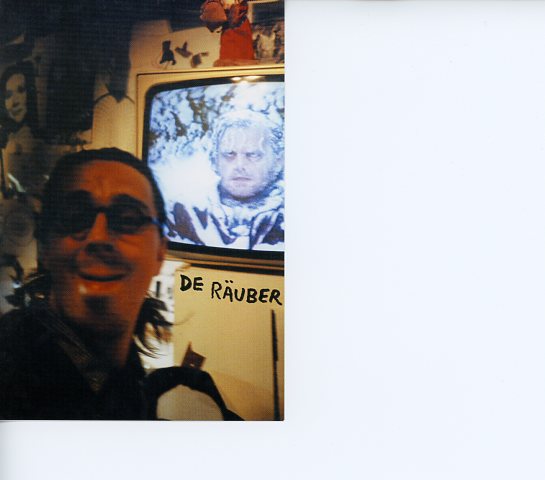
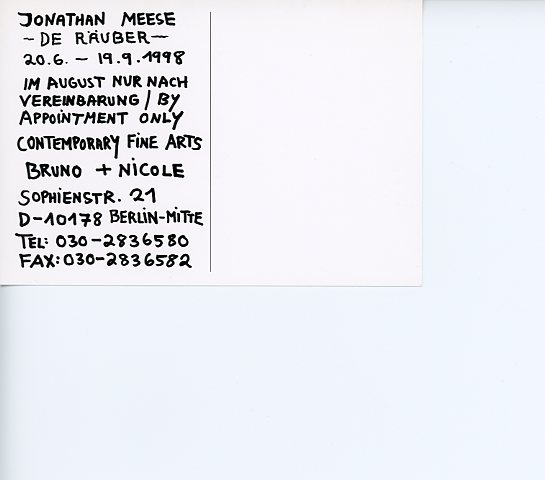
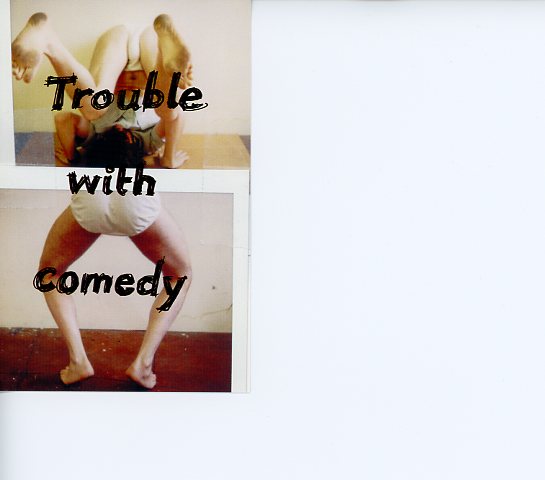
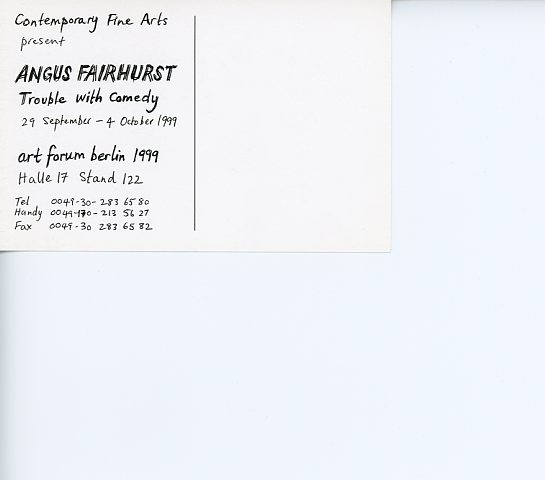
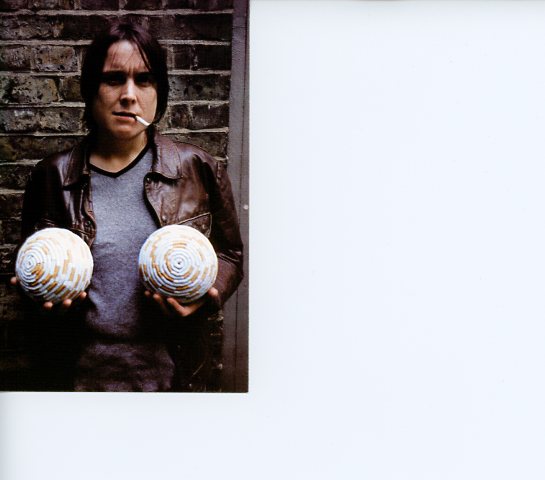
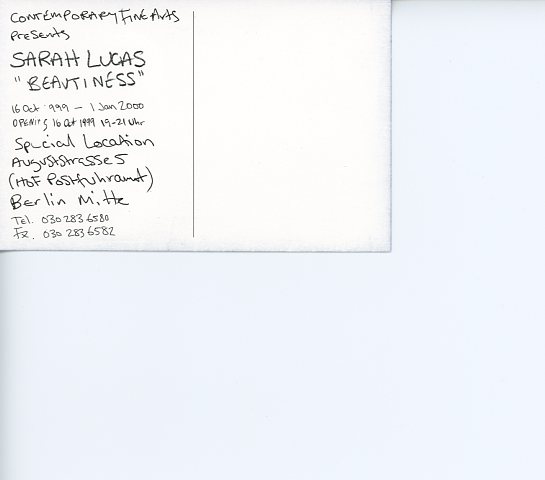
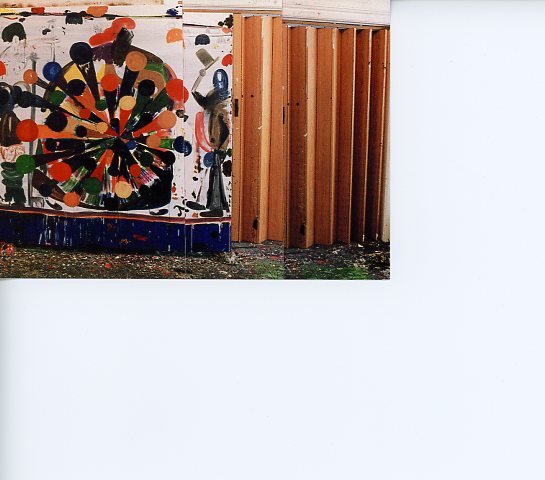
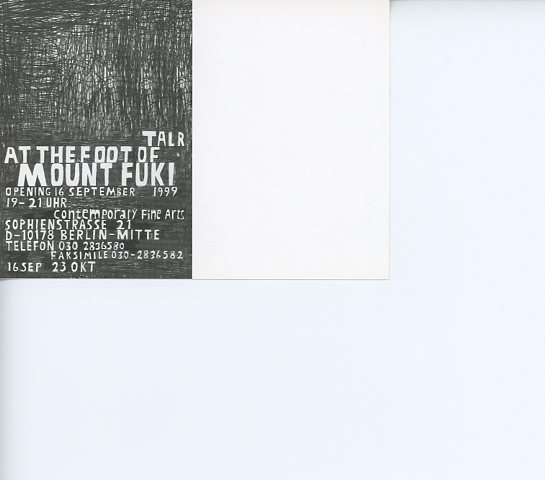
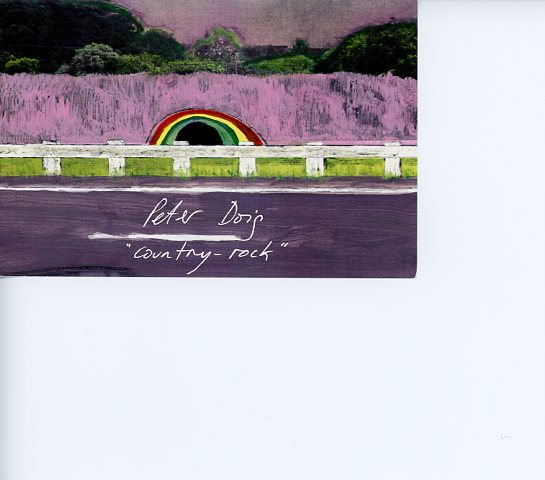
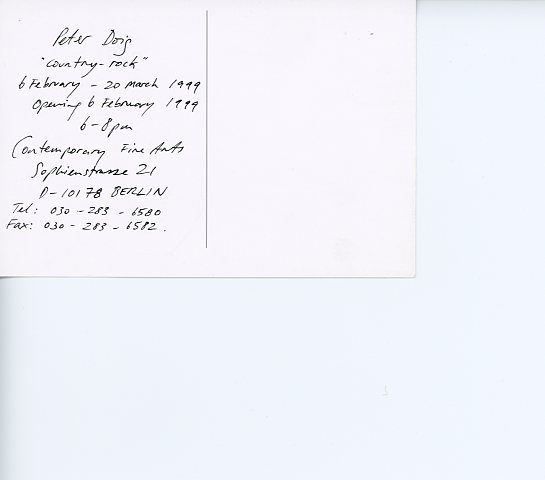

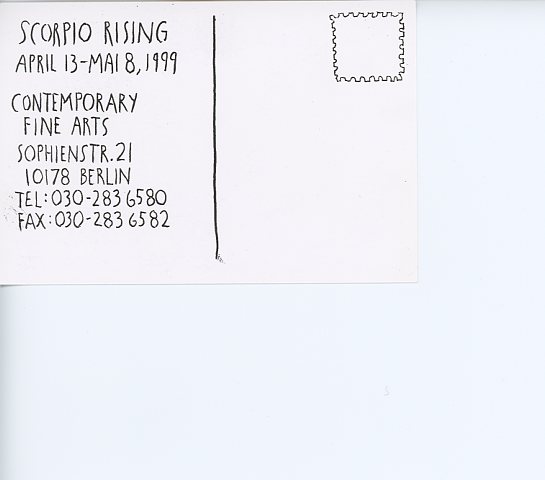
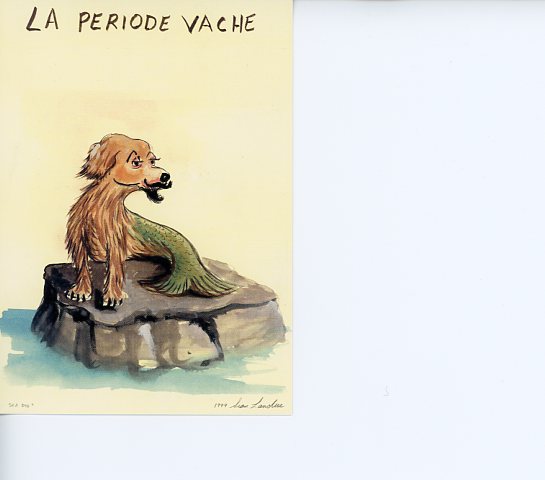
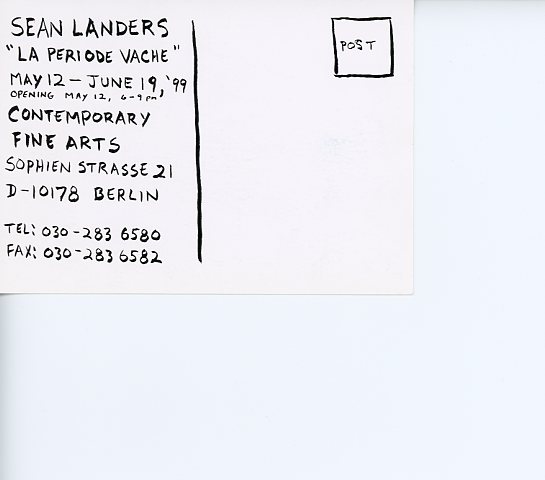
A series of invitation cards (1998-2000) by the Berlin based gallery Contemporary Fine Arts (CFA), established in 1992 and run by Bruno Brunnet and Nicole Hackert. For about two years, CFA used individual handwriting (by the artists?) instead of a standardized font. As many of the new young galleries established in the mid to late nineties, CFA used their invitation cards to highlight individuality and as an innovative form of (self-)branding. Invitation cards could become an art project, and a space where art may happen – and is distributed worldwide for free. A similar strategy was adopted by other young up-and-coming galleries such as neugerriemschneider, Berlin (est. 1994), Gavin Brown’s Enterprise, New York (1994-2020), CFA Contemporary Fine Arts, Berlin (est. 1992), The Modern Institute, Glasgow (est. 1997), or Eva Presenhuber (Galerie Walcheturm 1989-1998/Galerie Eva Presenhuber).
 follow
follow